The die-casting machinery sector is growing unexpectedly, from 3,633.6 million dollars in 2018 to 4,978.7 million dollars by 2026. Among several manufacturing methods, die-casting is a high-speed process that creates standard-quality, complex parts in large quantities.
The common casting materials used for die-casting methods are usually zinc and aluminum alloys. Each metal material has distinctive properties that impact the overall output.
Zinc and aluminum are widely used in electric, automotive, aerospace, industrial, pharmacy, and robotic applications due to their strength, weight, corrosion resistance, and melting points.
Selecting the appropriate material option between them may be a daunting step for startup businesses that are not aware of their unique characteristics. Therefore, we will discuss the specifics of zinc vs. aluminum in this article so that you can get comprehensive details, including applications and variations in either process.
Material Properties
Zinc die-casting can be compared to aluminum die-casting since it is produced through similar manufacturing steps. However, their properties and structural features are distinct from each other because either metal forms the basis of these differences.
Let’s further dive into the differences between aluminum and zinc material properties based on the following comparison:
- Melting Point
- Density and Weight
Melting Point
As compared to their general properties, aluminum alloys have a higher melting point range of 566–650 °C (950–1200 °F), whereas the melting point of zinc material hovers around 420 °C (788 °F). Therefore, each material proves effective for fabrications used in high-temperature conditions.
Density and Weight
Zinc alloys have a better density and heavier weight than aluminum, which is around 7.140 g/cm3, while less dense aluminum is about 2.7 g/cm³. This suggests that weight is an important consideration when selecting the right materials for your intended applications.
Impact on Strength, Ductility, and Dimensional Stability
Ductility and strength are vital properties of materials, influenced by their density and melting point. Aluminum alloys are lighter and have a low melting point, which makes them a combination of strong and ductile materials. Through the die-casting process, they can be easily shaped without breaking, making them suitable for applications in aircraft and automotive parts where both strength and durability matter.
Zinc alloys are heavyweight and less ductile, which can cause cracks under stress during manufacturing. This type of material is perfect for producing complex-shaped parts but could be better for applications requiring high flexibility.
The Corrosion Resistance
Aluminum material forms a thin layer of oxide to eliminate further corrosion and make it resistant to rust. This feature is helpful, especially in outdoor and marine applications that are frequently in contact with moisture.
However, zinc alloy is also enriched with excellent corrosion resistance. It is often used as a coating to protect the steel from rust and forms a protective layer when exposed to the atmosphere. These types of materials are widely useful in construction and automotive applications.
Thermal Conductivity
Aluminum alloys are known for their excellent conductivity, which is around 237 W/mK, especially for electrical purposes and applications of heat sinks and radiators. The thermal conductivity for zinc alloys is approximately equal to 116 W/mK. Despite its lower conductivity, it is ideal for some applications of door handles and knobs, insulated shells, and other parts with controlled heat dissipation.
Casting Process of Zinc and Aluminum
Hot chamber casting and cold chamber casting are the two common processes used in die-casting techniques for zinc and aluminum alloys. However, aluminum can be cast via hot chamber casting or cold chamber casting. Let’s discover these procedures in detail to understand their characteristics and benefits.
Hot chamber Die-Casting for Zinc
Hot chamber casting is a particular approach widely used for casting zinc. During this stage, the die-casting machine is used with an attached chamber where an alloy is melted. A plunger is then used to force the molten zinc into a mold, which can cool and solidify.
Advantages of Hot Chamber Zinc Die-Casting
One of the initial benefits of hot chamber zinc die casting is its faster cycle time. In this method, metal is kept molten within the machine, eliminating external melting equipment. That speeds up the process reduces production costs and increases outputs. Moreover, the zinc alloy requires lower operating temperatures and pressures that make the casting process less expensive and more economical.
Cold chamber Die-Casting for Aluminum
The cold chamber die-casting process is ideal for metals with higher melting points requiring maximum strength, such as aluminum. This process involves the machine ladling molten metal into a shot sleeve. Whereby it is forced into the mold at pressures that could surpass 10,000 PSI using a hydraulically driven plunger.
Advantages of Cold Chamber Die-Casting
Cold chamber casting offers better control over metal properties that are sensitive to temperature variations. This method helps produce high-quality castings by precisely controlling the cooling and solidification processes. Moreover, this casting process can handle metals’ higher melting points and corrosive nature without damaging machine parts.
Cycle Time Comparison
The cycle timing or the speed at which castings can be produced varies between hot and cold chamber casting. Hot chamber casting typically refers to a shorter cycle time compared to cold chamber casting. Due to the molten state of zinc and its lower melting point, it is ready to be injected into the die. For instance, hot chamber casting can create 15 shots per minute. As cold chamber casting requires additional steps for melting and transporting the metal, it may produce 5-7 shots per minute.
The difference in cycle time directly impacts manufacturing costs. The faster cycle times in hot chamber casting reduce labor and energy costs, making it a more cost-effective choice for producing large quantities of small—to medium-sized zinc parts.
For cold chamber casting, its slower cycle time is offset by its ability to produce high-quality complex aluminum parts with better mechanistic properties.
Casting Complexity and Thin Wall Sections
Both hot and cold chamber die-casting techniques can produce complex shapes and thin wall sections.
However, due to the fluidity of molten zinc and the precise control of the injection process, hot chamber casting is ideal for creating intricate zinc components with thin walls.
On the other hand, cold chamber casting, while having a shorter cycle time, excels at producing complex aluminum parts. It allows for the creation of detailed and intricate designs with excellent dimensional stability.
Design Considerations Zinc & Aluminum Casting
When creating parts for die casting, various factors must be considered, such as material properties and the casting process. These elements significantly influence the final outputs and may affect aspects of wall thickness, draft angle tolerance, and surface finish.
Material Properties and Casting Processes
The material properties of zinc and aluminum, along with their respective manufacturing processes, shape the design considerations. Zinc’s lower melting point and fluidity in hot chamber casting help create intricate designs with thin walls.
Aluminum die-casting using the cold chamber process offers superior strength and heat resistance, making it ideal for parts requiring durability and precision.
Minimum Wall Thickness
Zinc alloy die-casting can achieve extremely thin walls, down to 0.25 mm, due to its lower operating temperatures and excellent fluidity features. Aluminum can also produce thin walls, typically requiring a minimum wall thickness of about 1.5 mm. That ensures structural integrity during the casting process.
Draft Angles
Draft angles help in removing the cast parts from the die easily. A draft angle of 0.75-1 degree is often sufficient for zinc due to its shrinkage properties. Meanwhile, aluminum parts required slightly larger draft angles of 1-2 degrees to compensate for their higher solidification shrinkage.
Achievable Tolerance
Zinc die casting can produce parts with tolerances as tight as ±0.02 mm through its hot chamber casting process. In aluminum die-casting, the achievable tolerances can be ±0.05 mm, making it perfect for high-precision applications.
Surface Finishes
Surface finish quality is a crucial factor regarding design considerations. Zinc die casting generally exhibits smoother finishes by minimizing surface defects due to its lower melting temperature and hot chamber method. Aluminum die-casting can achieve excellent surface finishes that may be slightly rougher than zinc. This can be suitable for industrial applications and can be further improved with the post-casting process of polishing and anodizing.
Applications of Zinc and Aluminum in Die Casting
Various materials’ properties and casting processes influence material choices for specific applications. That includes elements such as cost-effectiveness, weight sensitivity, strength requirements, corrosion resistance, and aesthetics.
Zinc’s Cost-Effectiveness and Strength
The cost-effectiveness of zinc alloy and its excellent fluidity make it ideal for creating hardware components such as locks, hinges, and brackets. These parts can be produced with intricate designs and fine details by utilizing zinc for its lower material and production costs.
Aluminum’s Lightweight and Strength Requirements
Aluminum’s light weight is advantageous for automobile and aerospace applications. Utilizing this material lightens up applications and enhances fuel efficiency and performance. For instance, engine parts, frames, and structural components benefit from an aluminum strength-to-weight ratio.
Zinc’s Strength and Corrosion Resistance
Zinc alloy is the perfect choice for producing plumbing components such as fitting valves and connectors. It has superior strength and corrosion resistance. Applications need these components to endure harsh environments and moisture, ensuring long-term reliability and durability.
Aluminum’s Surface Finish
Aluminum die-casting is often chosen to provide the aesthetics and surface finish paramount in applications, which may also include coatings and anodizing processes. These applications include consumer electronics, kitchen appliances, and high-end architectural elements.
Choosing Between Zinc and Aluminum Die Casting
Key Considerations
When choosing the preferred material between zinc and aluminum, several key factors should be considered. These factors can involve:
- Production volume
- Part complexity
- Cost constraints
- Functional requirements
- Environmental impact
Production Volume
Production volume directly affects cost efficiency. Zinc die-cast is a perfect choice for higher-volume production. It has a faster cycle time and is more cost-effective for large quantities. Its lower melting point and quicker solidification minimize energy consumption and machine wear.
Conversely, aluminum die casting is expensive, offering better performance for lower volumes. The superior properties of this material make it a better choice for specialized, low-volume applications.
Part Complexity
Zinc alloys can excellently produce intricate designs and thin-walled sections with high precision to meet the requirements of detailed components. Aluminum or aluminium, due to its higher melting point and viscosity, can handle complex parts by requiring careful control of the casting process. However, that may limit its ability to generate extremely intricate parts compared to zinc alloy.
Cost Constraints
The capabilities of zinc’s lower melting point and fast cycle time typically result in lower production costs. That makes it an economical choice for budget-sensitive projects. Aluminum die-casting consumes a lot of energy and offers a longer cycle time, which causes additional expenses. It is more expensive than zinc while offering benefits in strength and weight, justifying its cost in applications where these factors are necessary. more over, no matter zinc or aluminum die casting, all of hot chamber or cold chamber casting that needs initial die casting mold cost.
Functional Requirements
Choose zinc for producing applications that need robust mechanical properties and high corrosion resistance, such as plumbing and hardware components. Meanwhile, aluminum is a lightweight material with outstanding strength characteristics that make it crucial for automotive and aerospace applications.
Environmental Impact
Environmental impact has become a more significant factor as time passes. However, both zinc and aluminum are highly recycled materials and help minimize environmental footprints. Besides this, aluminum recycling is more energy-intensive compared to zinc recycling, which could be a consideration for eco-conscious projects.
Making the Decision
Understanding a die-casting process, including suitable metal options, is vital. Another essential practice to ensure high-quality fabrication is using a decision matrix and prototyping. This helps ensure the selected material meets the project’s specific requirements and priorities.
Decision Metrix
A decision matrix can be used to systematically determine the right material by weighing several factors based on the project priorities. This matrix helps in assessing the trade-offs and making an informed decision.
Example of Decision Matrix
|
Criteria |
Weight |
Zinc Score |
Aluminum Score |
Total Zinc Score |
Total Aluminum Score |
|
Cost |
0.3 |
8 |
5 |
2.4 |
1.5 |
|
Weight |
0.2 |
5 |
8 |
1.0 |
1.6 |
|
Strength |
0.2 |
7 |
8 |
1.4 |
1.6 |
|
Part Complexity |
0.2 |
9 |
7 |
1.8 |
1.4 |
|
Environmental Impact |
0.1 |
7 |
6 |
0.7 |
0.6 |
|
Total |
1.0 |
7.3 |
6.7 |
In this decision matrix example, cost, weight, strength, part complexity, and environmental impact are evaluated. Zinc’s higher score indicates its suitability for this hypothetical project.
Prototyping
Prototyping is key in verifying designs and material suitability before full-scale production. It allows for testing and validating the performance of the chosen material under ordinary conditions. This process allows for identifying the potential issues and making the necessary adjustments to bring the final product to a higher standard.
Conclusion
This comparison between aluminum die-casting and zinc die-casting suggests choosing the preferred material options wisely based on their characteristics. The casting process for both materials is suitable for similar fabrications, but zinc offers cost-effectiveness and faster cycle times to produce a high volume of intricate parts. However, aluminum is preferred for its lightweight strength and is ideal for automotive and aerospace applications. Both materials are highly recyclable, with zinc being more energy-efficient in recycling.

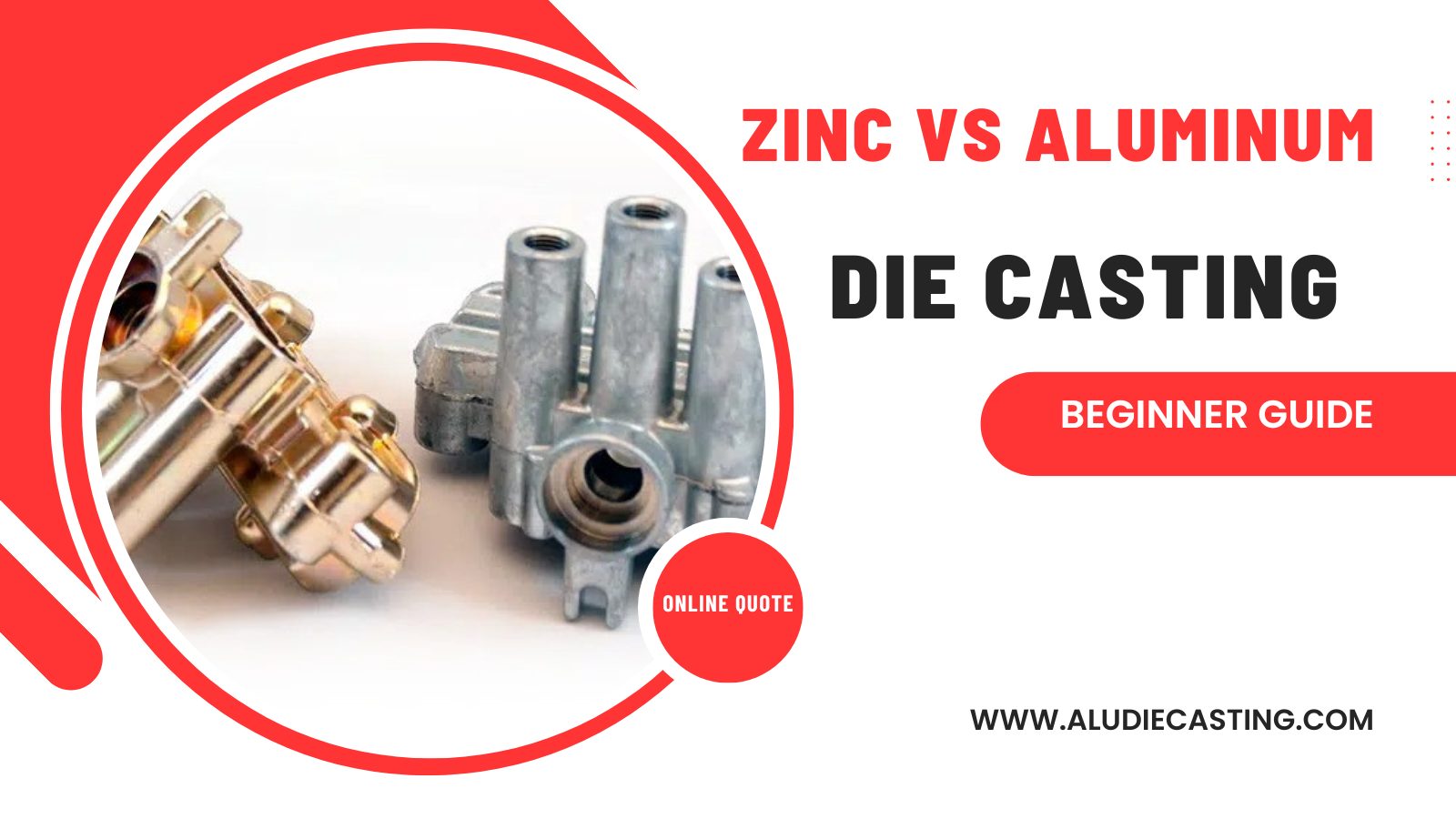
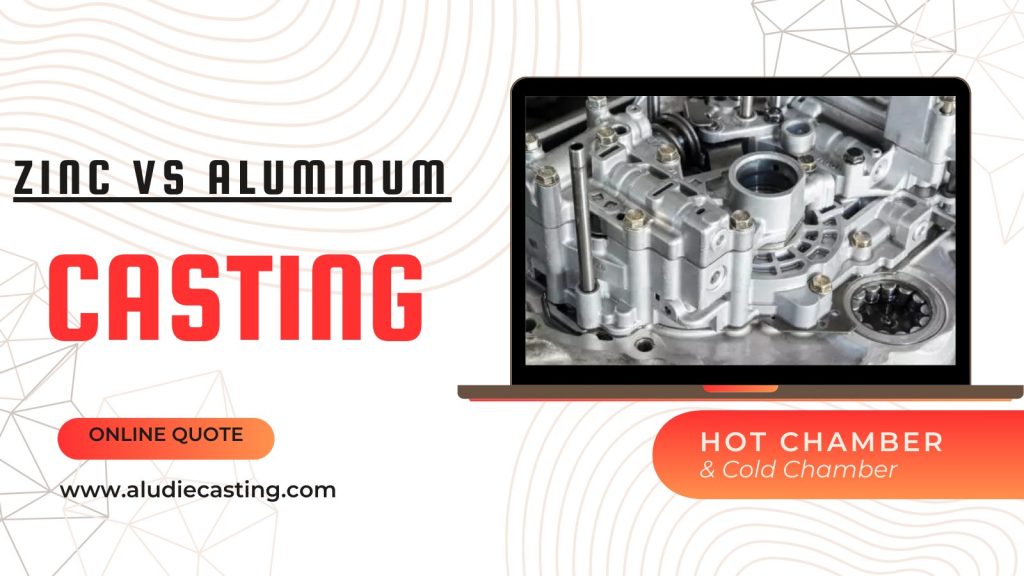
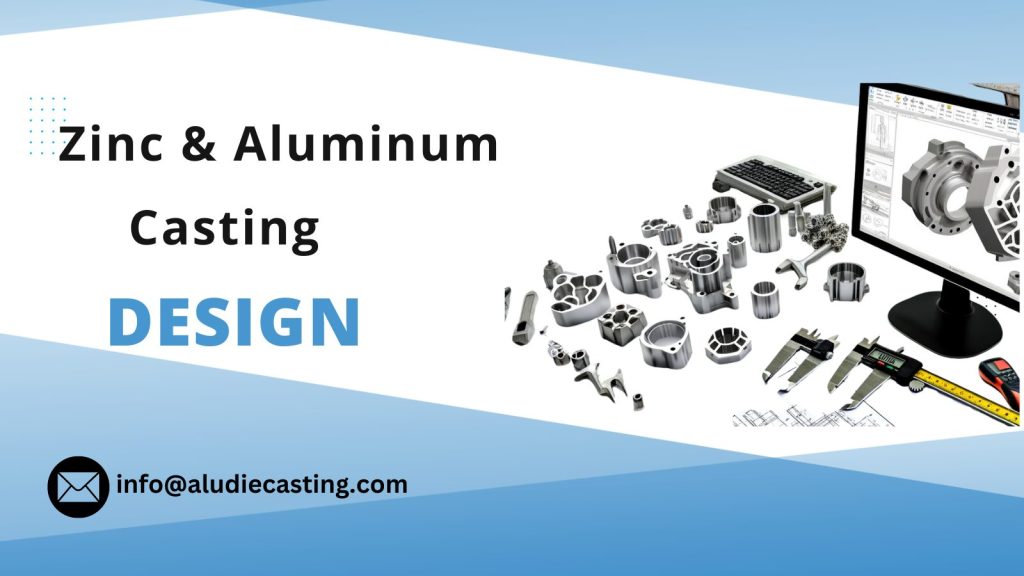
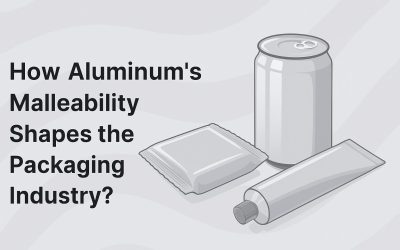
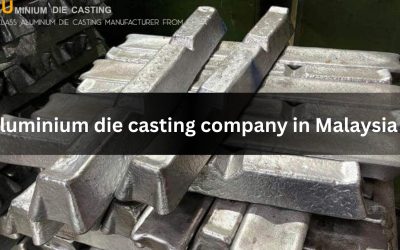

0 Comments